This blog was shared in 2024 during the development of our RIIO-T3 Business Plan. The plan has now been published and is available to view online.
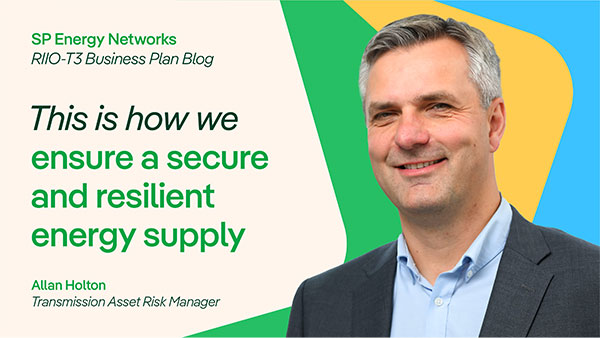
SP Energy Networks. RIIO-T3 Business Plan Blog. This is how we ensure a secure and resilient energy supply. Allan Holton - Transmission Asset Risk Manager.
I’m pleased to share the next in the series of blogs linked to the delivery of our RIIO-T3 Business Plan in December this year. In this blog, the key themes are ‘Non-Load Investment’ and ‘Resilience’ - how we support and secure our network, ensuring we can run our business efficiently, provide high quality service and be resilient to changing circumstances & climate change. If you’re looking for a short summary of this blog, scroll to the end or click to read the top 3 key points.
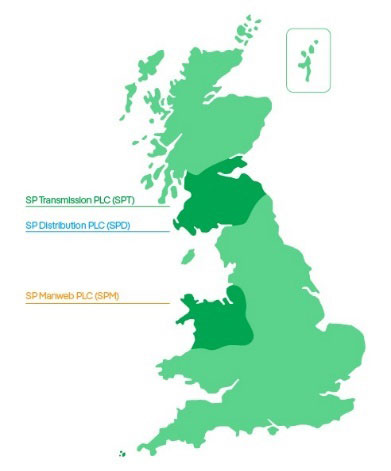 As a transmission and distribution network owner, we keep electricity flowing to homes and businesses throughout Central and Southern Scotland, North Wales, Merseyside, Cheshire and North Shropshire. We play a critical role in enabling the transition to a more sustainable future and enabling Government missions of turbocharging the UK to clean power by 2030, reaching Net Zero by 2045 (Scotland) and 2050 (UK).
As a transmission and distribution network owner, we keep electricity flowing to homes and businesses throughout Central and Southern Scotland, North Wales, Merseyside, Cheshire and North Shropshire. We play a critical role in enabling the transition to a more sustainable future and enabling Government missions of turbocharging the UK to clean power by 2030, reaching Net Zero by 2045 (Scotland) and 2050 (UK).
ScottishPower’s recent ‘Green light for Growth’ recently highlighted the need to “double down on grid investment” to “unlock investment, drive economic growth, and deliver clean energy security.”
Our next Transmission Business Plan (RIIO-T3 Business Plan), to be published in December this year, will set out our proposed investment in the transmission network in Central and Southern Scotland for the 5 years between 2026 to 2031. Our investment plan will be critical in enhancing energy security for Scotland and beyond, alongside helping protect society from the dangers of climate change whilst delivering economic growth through good, green jobs and community benefits.

Using new technology - Drones are used for inspections at height of overhead lines and transmission towers.
We are responsible for keeping the lights on and ensuring power gets to where it’s needed. That means we need to support and secure our network, ensuring we can run our business efficiently, provide high quality service and be resilient to changing circumstances & climate change. Our Non-load and resilience activities include everything from replacing or refurbishing assets we have assessed as being near end of life, to the development of physical and cyber security plans.
Safety
The safety of our customers and staff is built into everything we do. It’s not just about meeting legal obligations and safety targets, it’s about exceeding them.
Within our transmission license area, we have over 600km of underground cable, over 4,500km of overhead lines and over 160 substations and 100+ grid supply points. It’s our responsibility to ensure this equipment and infrastructure is regularly inspected, maintained and replaced or refurbished to ensure it is as safe and secure as possible.
In relation to our RIIO-T3 Business Plan, we refer to this type of activity as ‘Non-Load’.
Jargon buster: Non-Load is a term used for costs/work that are not adding additional capacity to the network. For example, replacement or refurbishment of an existing asset. Our previous blog covered ‘Connections, Load and Whole System’ if you would like to read more about the ‘Load’ topic.
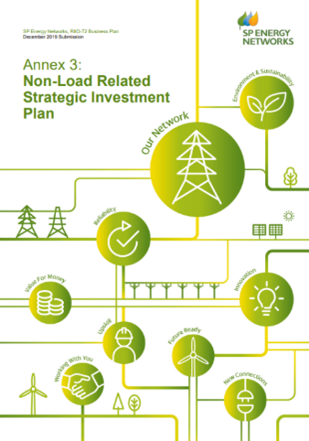 As part of our RIIO-T2 Business Plan (2021-2026) we created a Non-Load Strategic Investment Plan which looked out to the end of the RIIO-T3 price control period (2031). Our regulatory framework requires us to submit business plans every 5 years, however we manage our assets on an ongoing basis and therefore our investment plans are not constrained by this framework. We know when we need to invest in our asset many years before the investment takes place. Our Non-Load Strategic Investment Plan extended into the RIIO-T3 period (2031) because we knew we had projects that we needed to undertake in RIIO-T3 with long project development times. Therefore, to deliver in RIIO-T3 we would need to start to invest in these projects in RIIO-T2 (2021-2026). This forward-thinking process will happen again, with our RIIO-T3 Business Plan also looking into the RIIO-T4 price control period (2031 - 2036).
As part of our RIIO-T2 Business Plan (2021-2026) we created a Non-Load Strategic Investment Plan which looked out to the end of the RIIO-T3 price control period (2031). Our regulatory framework requires us to submit business plans every 5 years, however we manage our assets on an ongoing basis and therefore our investment plans are not constrained by this framework. We know when we need to invest in our asset many years before the investment takes place. Our Non-Load Strategic Investment Plan extended into the RIIO-T3 period (2031) because we knew we had projects that we needed to undertake in RIIO-T3 with long project development times. Therefore, to deliver in RIIO-T3 we would need to start to invest in these projects in RIIO-T2 (2021-2026). This forward-thinking process will happen again, with our RIIO-T3 Business Plan also looking into the RIIO-T4 price control period (2031 - 2036).
Non-load Plan
Non-load Plan
Our network is made up of lots of different type of assets, some that will be very familiar like overhead line towers and substations to assets that we use to control our network, that would only ever be visible to experienced engineers. Our job is to make sure we understand these assets to ensure we replace or refurbish them before they are no longer capable of carrying out their job and impact on our world class levels of resilience. This is what we call our non-load plan.
We are continually carrying out detailed condition assessments tailored to specific types of asset. Our experienced engineers review the condition of all of our assets as part of our accredited asset management processes. This allows us to understand when an asset is nearing end of life and requires to be replaced or when an asset reaches a condition when we can extend its life by carrying out a refurbishment. This process is continuous and what we present as our RIIO-T3 non-load plan is the assets we need to intervene on between 2026 and 2031, however our plans look far beyond the end of RIIO-T3.
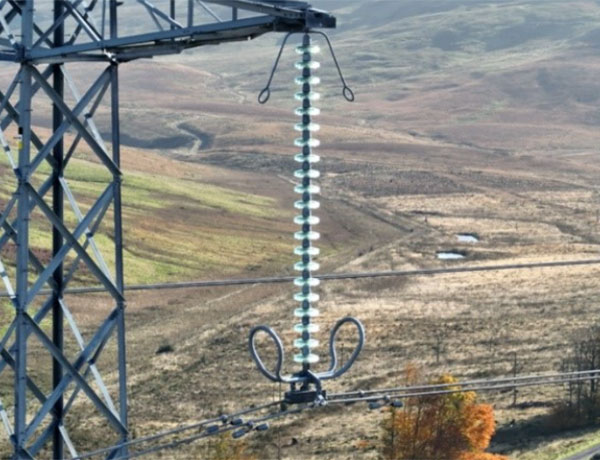 For example – overhead lines are made up of many different types of asset. We look at the towers, fittings, conductors and earth wire and we decide the interventions required to ensure these assets remain reliable. In RIIO-T3 there are overhead line routes where we plan to replace the conductor, replace the fittings, paint the tower and replace the earthwire because that is what is needed to ensure the selected routes remain reliable. On other routes we are replacing only the fittings and others where we have selected to only paint the towers. We make sure, after careful consideration, we select the interventions that an asset needs which allows us to develop an efficient plan. This process is repeated for all of our different asset types and our non-load plan represents the interventions required to ensure our customers are only asked to fund the work that is required and enjoy the levels of resilience in our network that they expect.
For example – overhead lines are made up of many different types of asset. We look at the towers, fittings, conductors and earth wire and we decide the interventions required to ensure these assets remain reliable. In RIIO-T3 there are overhead line routes where we plan to replace the conductor, replace the fittings, paint the tower and replace the earthwire because that is what is needed to ensure the selected routes remain reliable. On other routes we are replacing only the fittings and others where we have selected to only paint the towers. We make sure, after careful consideration, we select the interventions that an asset needs which allows us to develop an efficient plan. This process is repeated for all of our different asset types and our non-load plan represents the interventions required to ensure our customers are only asked to fund the work that is required and enjoy the levels of resilience in our network that they expect.
Also to ensure efficiency, our non-load plan reflects interventions we are planning through our load expenditure activities.
Operational Technology
Operational Technology
The systems and networks that we use to protect, control and monitor our network are known collectively as operational technology (OT). These are required to ensure safe, reliable, and secure electrical network management. The protection system is critical to ensure safety of the general public, our operational teams, and to ensure stability of the electricity network. The remote control and monitoring systems of our network are vital to optimise network performance, reliability, and sustainability. It is the intelligent control of the network.
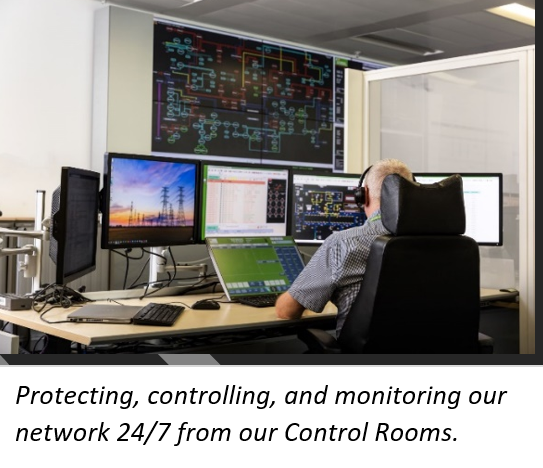 Our Telecommunications network connects every substation to the control rooms providing a secure connectivity between them and the System Operator. It utilises a variety of media including 4G, radio, cable, fibre optic, satellite, and leased services. In RIIO-T3, we are investing in our Telecommunication networks to improve resilience of the electrical network by enhancing the quality and capacity of the existing telecommunications network, replacing obsolete equipment, and deploying new technologies to improve reliability and enhanced management of the network required to ensure our customers are only asked to fund the work that is required and enjoy the levels of resilience in our network that they expect.
Our Telecommunications network connects every substation to the control rooms providing a secure connectivity between them and the System Operator. It utilises a variety of media including 4G, radio, cable, fibre optic, satellite, and leased services. In RIIO-T3, we are investing in our Telecommunication networks to improve resilience of the electrical network by enhancing the quality and capacity of the existing telecommunications network, replacing obsolete equipment, and deploying new technologies to improve reliability and enhanced management of the network required to ensure our customers are only asked to fund the work that is required and enjoy the levels of resilience in our network that they expect.
Resilience
To support and secure our networks, we need to make sure we can run our business efficiently and be resilient to changing circumstances and climate change. As part of our RIIO-T3 Business Plan, we are developing a number of strategic plans:
Physical Security Plan
Physical Security Plan
Physical security of our assets is of critical importance as we operate an essential service, with some of them classified by the UK Government as ‘Critical National Infrastructure’ (CNI). In RIIO-T3, we are focused on Physical Security and continue to invest in the enhancement of our existing systems and infrastructure.
In developing our Physical Security Plan, we have assessed all of our current existing physical security controls to establish strategic requirements, mitigating control sets and processes. This ensures our Physical Security aligns with Network and Information Systems Regulations 2018 (NIS Regulations) and also supports our Cyber Security Plan.
Cyber Security Plan
Cyber Security Plan
In RIIO-T3, we continue to invest in Cyber Security for our Operational Technology as part of our risk-based approach and contributing to the resilience of our transmission network. We will also be developing a Cyber Security Plan, this will not be published publicly due to the sensitivity of the content. Whilst this plan is confidential, you can read more about our wider Digitalisation Strategy on our website.
Climate Resilience Plan
Climate Resilience Plan
Our key objective is to maintain a safe and resilient network, therefore it is important that we respond to the changing climate and associated impacts. Our Sustainable Business Strategy defines Climate Resilience as:
“The ability to anticipate, prepare for, and respond to hazardous events, trends or disturbances to climate. Improving climate resilience involves assessing how climate change will create new, or alter current, climate-related risks, and taking steps to better cope with these risks.”
Our recently published Action Plan for Nature provides an overview of ‘Climate Resilience and Nature Based Solutions’. It explains that our approach to climate adaption “…focuses on actively investing in flood resilience at our infrastructure sites; as well as adapting to longer growing seasons and preparing for extremes of temperature by reviewing our vegetation management procedures and exploring Integrated Vegetation Management Methods (IVM).”
We published our Distribution Climate Resilience Strategy as part of our RIIO-ED2 Business Plan and will publish our Transmission Climate Resilience Strategy as part of our RIIO-T3 Business Plan in December 2024. This Strategy will outline the key risks we consider will impact our Transmission Network up to 2050 and potential mitigations we can implement to improve our network resilience. Higher priority mitigations and actions based on the Strategy will be implemented during the RIIO-T3 period (2026-2031).
An example of climate mitigation we have already implemented can be seen at the new Kincardine 275kV substation. We identified the risk of coastal flooding at this site and investigated several options for mitigations. After a cost assessment of the options, it was decided to raise the substation height by 6 metres through the use of an elevated platform. This was completed in 2022 and can be seen in the photos below.
The new Kincardine 275kV substation raised by 6 metres to defend against floods
Stakeholder Engagement
You can Register as a Stakeholder to be kept up to date with engagement opportunities relating to our RIIO-T3 Business Plan. Members of our Independent Net Zero Advisory Council (INZAC) will also be supporting the development of our Business Plan, scrutinising both the technical plans as well as ensuring any emerging customer issues are fully considered.
The top 3 takeaways from this blog are:
- We are developing our next Transmission Business Plan (RIIO-T3 Business Plan) which will be published in December 2024.
- The safety of our customers and staff is built into everything we do. It’s not just about meeting legal obligations and safety targets, it’s about exceeding them. That means we need to support and secure our network, ensuring we can run our business efficiently, provide high quality service and be resilient to changing circumstances & climate change.
- Register as a Stakeholder to be kept up to date with engagement opportunities relating to our RIIO-T3 Business Plan.
Stay up to date via our dedicated RIIO-T3 page which will be updated regularly with new blogs, our progress and opportunities for engagement. If you have any enquiries about our RIIO-T3 Business Plan, please email us on riio-t3pmo@spenergynetworks.co.uk